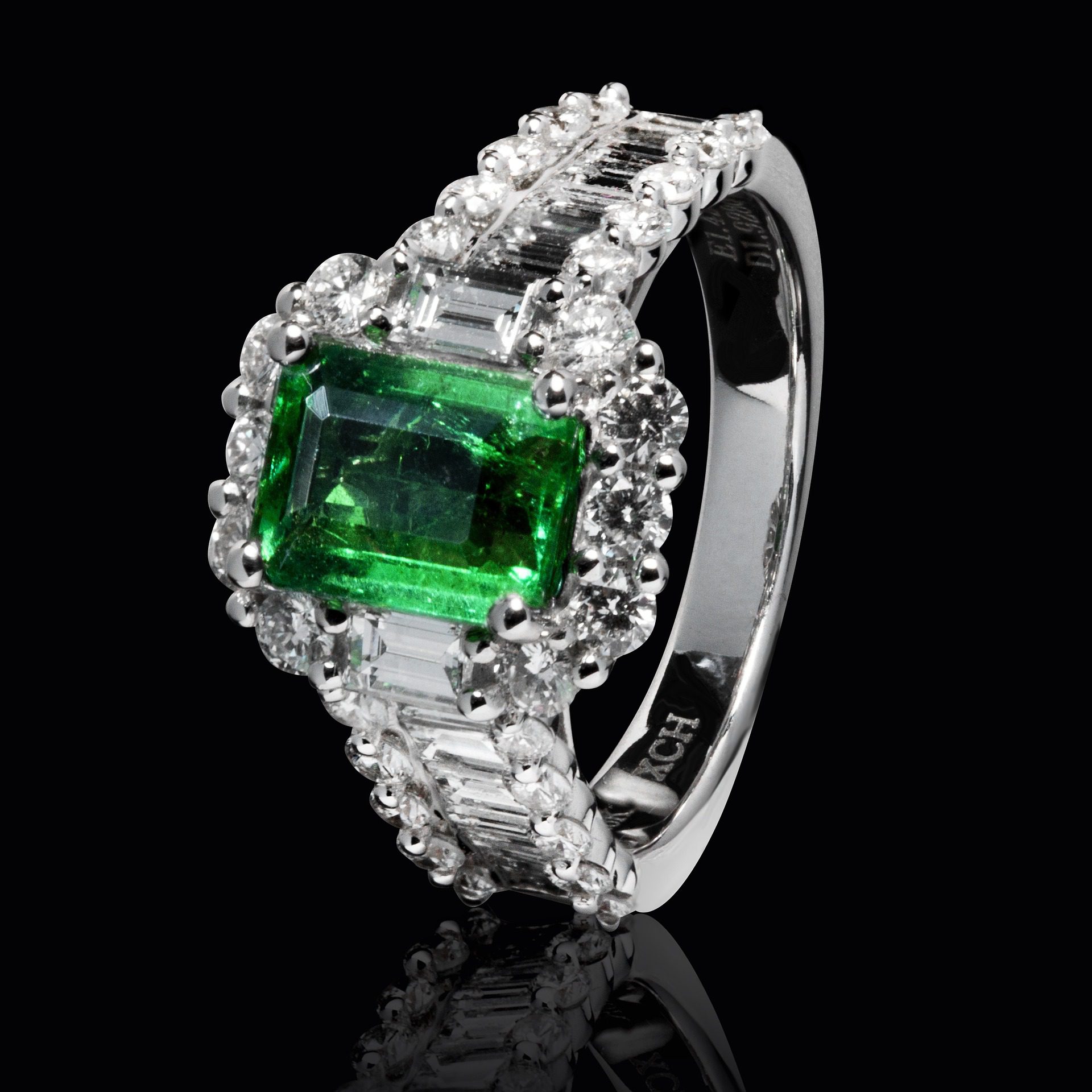How Do Emeralds Form?
How do emeralds form? Learn how the emerald growth process works and why it makes these gems rare, green, and very fragile.
3 Minute Read
What is Emerald?
Emerald is a variety of the mineral beryl. Specifically, it’s the green variety that gets its color from impurities of chromium, vanadium, or both. Beryl with poorly saturated green color is called “green beryl.” Other varieties of beryl include aquamarine, morganite, heliodor, and the extremely rare red beryl.
Beryl grows in hexagonal crystals, and some beryl crystals can grow quite large. This mineral can form in hydrothermal veins or in magmatic pegmatites. With beryllium, aluminum, silicon, and oxygen at the right temperature and pressure, this mineral can form, assuming there’s enough space.
When beryl is pure, it’s actually colorless. Trace elements add color to the mineral. So, emeralds form when there’s enough chromium and vanadium where a beryl crystal grows.
These emerald specimens formed in different environments. The Colombian emerald comes from relatively low-temperature hydrothermal fields, while the Zambian emeralds formed in association with pegmatites. Photos © Rob Lavinsky, www.iRocks.com. Used with permission.
Why are Emeralds so Rare?
Geologically speaking, emeralds are extremely unusual. Their chemistry combines rare elements from entirely different depths of the Earth, which means that there aren’t many places where they can form.
When the Earth was…
Addison Rice
A geologist, environmental engineer and Caltech graduate, Addison’s interest in the mesmerizing and beautiful results of earth’s geological processes began in her elementary school’s environmental club. When she isn’t writing about gems and minerals, Addison spends winters studying ancient climates in Iceland and summers hiking the Colorado Rockies.
Related Articles
Emerald Value, Price, and Jewelry Information
Choosing an Emerald Engagement Ring Stone
Emerald Treatments and Alternatives
Identifying Lab-Made Emeralds
Latest Articles
800 Years of Mogok: A Celebration in Tenuous Times
What is the Average Gemstone Faceting Yield?
Pyroxmangite Value, Price, and Jewelry Information
How to Identify Emerald Simulants and Synthetics
Never Stop Learning
When you join the IGS community, you get trusted diamond & gemstone information when you need it.
Get Gemology Insights
Get started with the International Gem Society’s free guide to gemstone identification. Join our weekly newsletter & get a free copy of the Gem ID Checklist!
